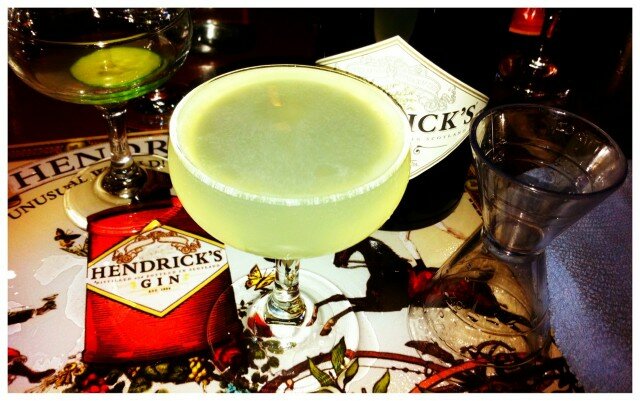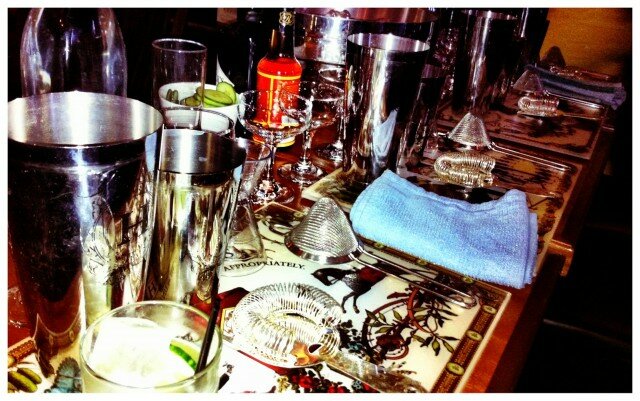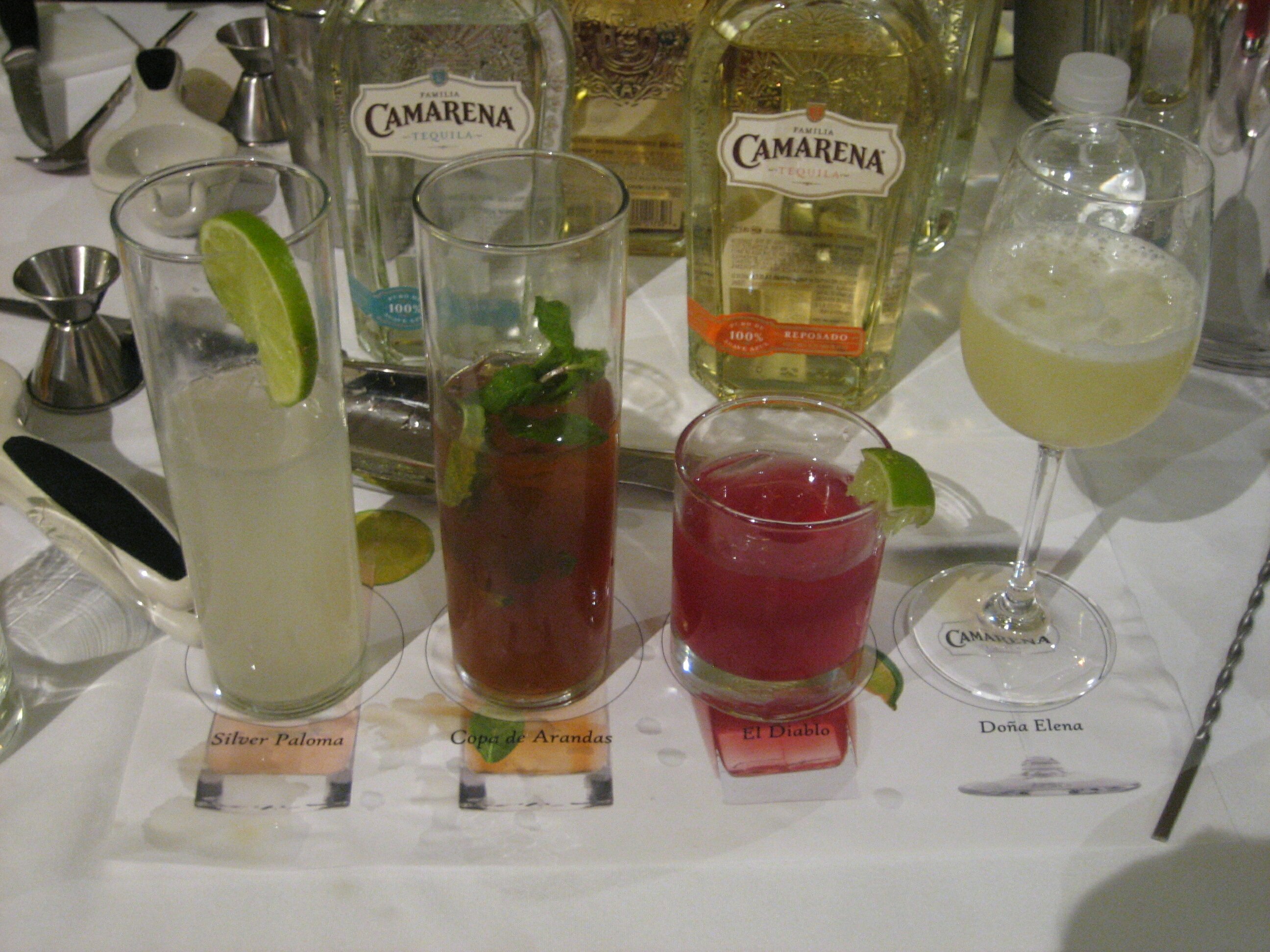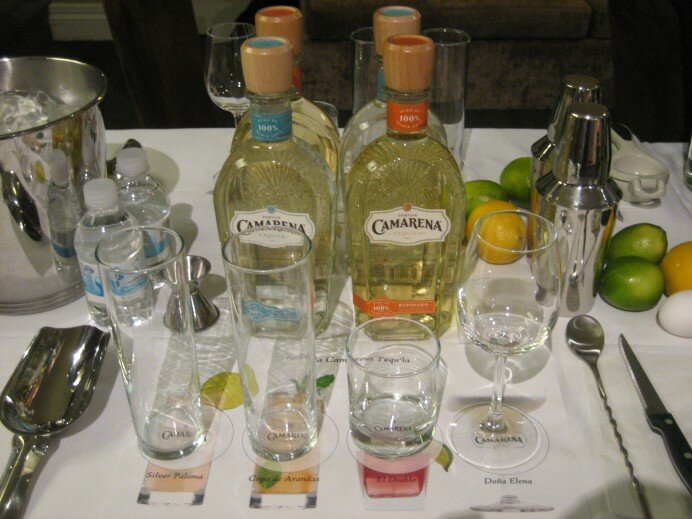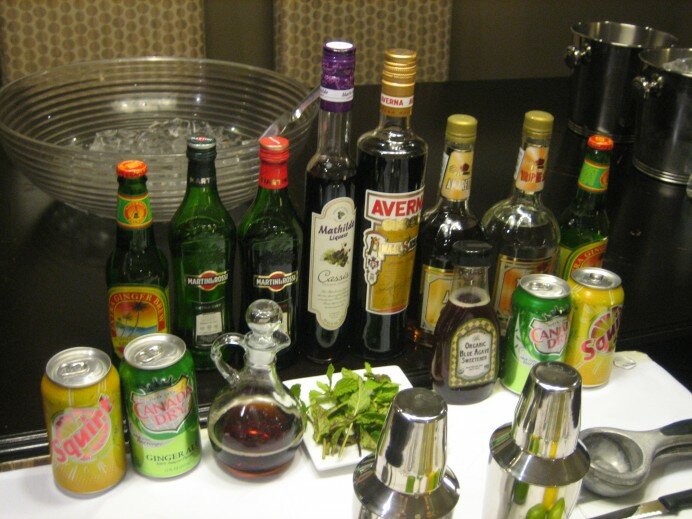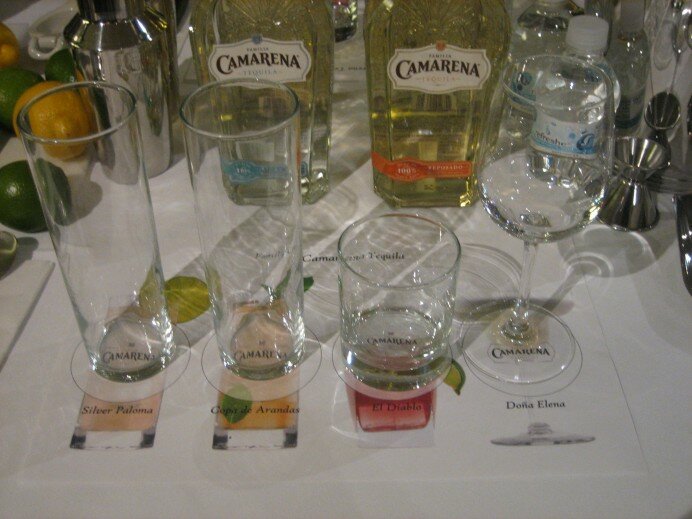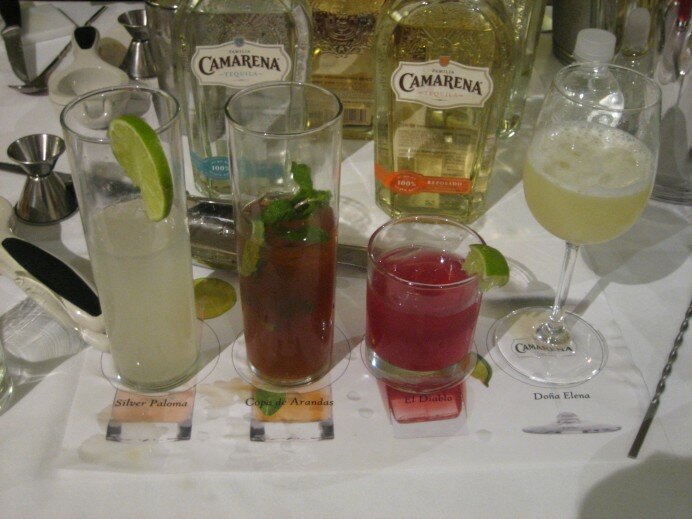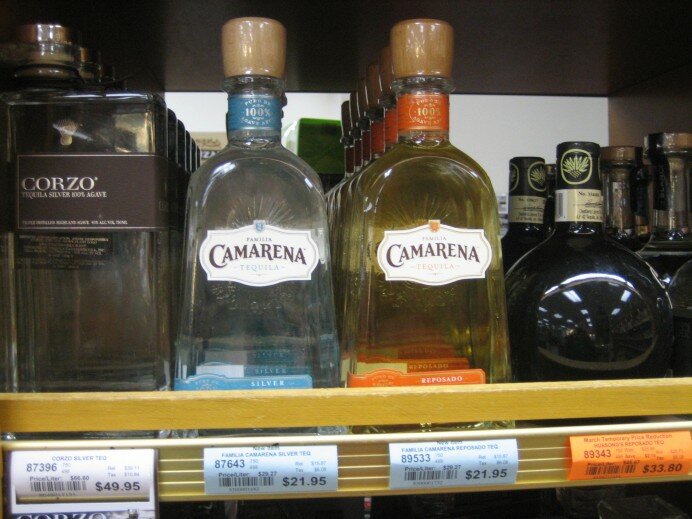Do you drink Hendrick’s Gin? Such a question–as a sophisticated, worldly lady and/or gentleman, of course you do. It’s a most unusual, curiously different gin, after all. And what makes it so different? BOTANICALS, son. That, at least, was the take-away lesson from our visit to Hendrick’s Gin Cocktail Academy, held last month at Tavern Law. Jon Santer, mixologist-turned-brand ambassador for Hendrick’s, was on hand to teach a room of mostly drunk girls how to make gimlets. And if drunk girls who RSVPed for an event via Yelp/Facebook can figure out how to do it, then you can too.
Now back to those botanicals: Hendrick’s is a small-batch gin (under 100 gallons at a time) produced in Scotland and known for its inclusion of cucumber and rose, so it’s not as sharp or astringent as most gins. Hendrick’s is delicate, smooth, and not overly juniper, allowing it to pair easily with floral and citrus ingredients. It’s all in the balance of those ingredients, and what better way to demonstrate that than an elegant gimlet? The gimlet is a cocktail that can appear deceptively simple, and it is–it’s just lime, simple syrup, and gin–but in just a few steps, you can take it up a notch and make it more complex, while still easy to prepare (and drink).
After teaching us all about gin in general (gineral?) and Hendrick’s gin in particular, Jon used the classic gimlet as a starting point to demonstrate the concept of balance in a drink, before showing the class how to make two other versions of the cocktail. (All three recipes below.)
The simplicity of the gimlet really lets the flavor of the gin shine through, so the garnishing with cucumber emphasizes Hendrick’s cucumber botanicals, while pairing it with St. Germain brings out more of the gin’s delicate floral tones. (My favorite of the three we drank that night was the Gimlet Evolved, which merely substitutes St. Germain in place of simple syrup.) The most complex take on the gimlet also used St. Germain, along with lime juice and orange bitters, topped with sparkling wine. But go easy on that sparkling wine–the other flavors can get lost in too much bubbly. All important lessons to learn.
Gimlet
1 1/2 oz. Hendrick’s Gin
3/4 oz. fresh lime juice
3/4 oz. simple syrup
cucumber slice garnish
Add gin, lime juice, and simple syrup to a cocktail shaker. Add ice, shake vigorously. Double strain into a glass, garnish with a cucumber slice.
Gimlet Evolved
1 1/2 oz. Hendrick’s Gin
1 oz. St. Germain
3/4 oz. fresh lime juice
cucumber slice garnish
Add gin, St. Germain, and lime juice to a cocktail shaker. Add ice, shake vigorously. Double strain into a glass, garnish with a cucumber slice.
Cucumber Gimlet
1 1/2 oz. Hendrick’s Gin
1 oz. St. Germain
3/4 oz. fresh lime juice
1 dash orange bitters
dry sparkling wine
cucumber slice garnish
Add gin, St. Germain, lime juice, and bitters to a cocktail shaker. Add ice, shake vigorously. Double strain into a glass, top with sparkling wine, and garnish with a cucumber slice.
(Double strain a cocktail by pouring it through the cocktail shaker’s Hawthorne strainer, through another mesh strainer, into the cocktail glass.)

